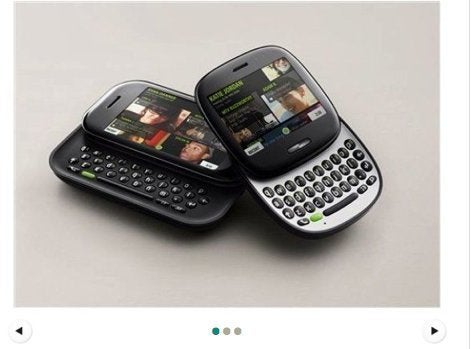
SAN FRANCISCO -- The search for a cell phone starts with one big question. Should you get a smart phone that lets you customize your device with all kinds of applications, or should you save money and get a not-so-smart phone that has fewer functions?
Microsoft Corp. thinks it has two new phones that could bridge the gap. Its Kins, which cost $50 or $100 through Verizon Wireless, are geared toward social networking-obsessed teens and twenty-somethings who want an affordable way to keep in touch on the go without diving into additional apps like Apple Inc.'s iPhone offers.
It's a potentially shrewd move because the world's largest software maker has been losing ground in the mobile market to newer players such as Apple and Google Inc., which makes the Android operating software.
The Kins' simple software, moderately good looks and low upfront cost could turn hip young heads. Unfortunately, the phones have aggravating shortcomings. They're saddled with a sluggish processor, lack instant messaging and mapping applications and require a full-price data plan ($30 per month).
The first thing you'll notice about the Kins is their shape. Kin One ($50 with a rebate and two-year Verizon Wireless contract) is short and squat with a keyboard that slides out from its bottom, while Kin Two ($100 with a rebate and two-year contract) is longer, with a keyboard that slides out from its side.
Kin One has a touch screen that measures 2.6 inches diagonally, a 5-megapixel camera and 4 gigabytes of built-in memory; Kin Two includes a touch screen that measures 3.4 inches diagonally, an 8-megapixel camera and 8 gigabytes of memory.
The Kin's software, which Microsoft developed just for these phones, is a mixed bag. It's well designed and extremely simple, but it's too limiting.Story continues below
It starts in a promising way, with a home screen populated by a rotating list of your friends' updates to blogs and social networks like Twitter and Facebook. There's also a nifty feature called the "Spot" that lets you send photos to friends by pulling them into a little circle at the bottom of the screen.
The Kin home screen is flanked by two hidden side screens you can swipe to see. One is meant to be plastered with a collage of your favorite contacts, and the other houses the Kin's limited list of applications and settings.
Once I started perusing the applications, I was vexed that there was no way to instant-message my friends, or look up directions on a built-in map application to meet up with them. Sure, you can send text messages or use the phone's Web browser to look up directions, but why not just include these functions on the phone if you're already forcing customers to pay for a full-size data plan?
This was all made worse by the phone's pokey performance. On numerous occasions the touch screen had a delayed response, such as when I scrolled through a list of albums in the music player, swiped between the main screens or tapped to open a link or contact. At times, the mechanical "back" button on the face of the phones took a little while to respond.
Surfing the Internet was possible but painful as the Kins languidly loaded websites. A Kin often refused to update my status on Facebook, claiming Verizon's network wasn't available.
It's not all bad. The Zune music player is attractively laid out and super simple to navigate. It was easy to find and download music straight to the Kins once I signed up for a Zune Pass subscription ($15 per month).
I also liked the Kin Studio site, which users can access to see a big timeline of everything they've done with their phone, from photos and videos taken to texts sent.
Phone calls sounded OK, and it was nice to see the Kins come with Wi-Fi access.
Both Kins have no-fuss, decent cameras with bright LED flashes, numerous picture-taking settings and dedicated camera buttons. I found it easier to focus my shots with the smaller, lower-resolution Kin One, because the phone fit better in my hand than its bulkier brother. I also liked that the Kin screens respond to multiple finger gestures for zooming in and out of photos and, if you dare load them, Web pages.
Overall, Microsoft has a lot of work to do on the Kins if it wants to truly straddle the divide between smart phones and feature phones. I'm skeptical that young consumers will be thrilled with this first effort. It has the looks and some good features, but beyond that it's not so smart.